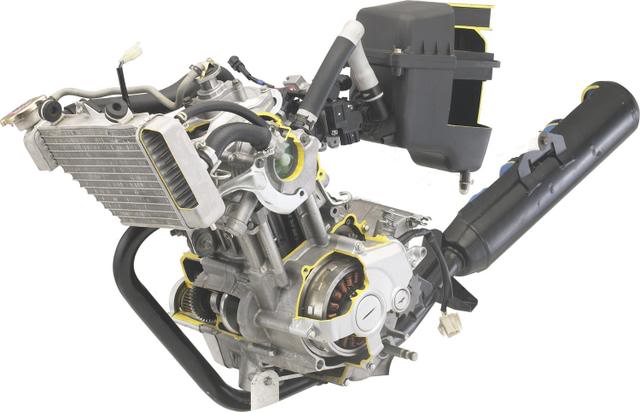Know the market value of your used bike
KMs Run
Torque: In Mechanics, Torque or the Twisting moment is defined as the product of the force applied to a point and the perpendicular distance to the force acting on that point. It wouldn't make sense to the not-so-nerdy ones but the idea is simple. Torque is all about the force that tends to twist or rotate an object while acted upon. On a bike though, it's one of the factors that buyers usually look at. Larger the torque numbers, the faster the bike is going to pull away from the rest. Torque is defined in Newton metres (cross product of force and distance). You often see that the torque values often come with a specified RPM ( revolutions per minute). Maximum torque is delivered at a certain rpm and this is where fuel is burnt most efficiently and the crank is rotated highest in this range and the torque is transferred to the wheels.
Power is a derivative of Torque. Power is defined as the rate at which work is done/can be done. It has the units Kilowatt(Kw) or Horsepower(Hp). To know the Power of a certain engine, you have to know the Torque produced by it. Multiplying the torque with the number of revolutions per minute (RPM) can give you the power generated. Torque and Power are two essential factors to be looked upon before buying a bike. Although the amount of torque reveals the character of a bike, the amount of power shows where the bike stands. A bike that delivers torque in the broad RPM range suits those who want a bike that performs well on the roads.

Power to Weight Ratio is a classical term used in the field of racing and not particularly popular among proper road-going or street bikes. The P-W-R is highly regarded in racing as with all other elements that make up to give optimum performance levels. There is a difference between usable power and too much power. When the vehicle is given an engine that churns a mighty 200 horsepower or more, attached to a structure that weighs almost the same as a feather, the power given to the wheels will exceed its ability to stop it from spinning and also power delivery will vary across different RPM zones. Much of the population believes in getting a vehicle that churns out a lot of power. However, what goes unattended is how that power is controlled. A lot of this, with respect to motorcycles, depends on the combined weight of the bike and the rider and the Rear Wheel Horsepower. For example, a bike that gives out the same amount of power is being ridden by two riders, one who is bulky and the other being skinny. The skinny rider will be off the mark faster than the other because the heavier bike needs more effort to pull all of the weight to ideal acceleration. Wheel spin on the lighter bike is obvious but in terms of acceleration and attaining top speed, the heavier one is slower owing to the weight. Therefore, the racing teams always require their riders to be in shape and want their bikes to be as light as possible to gain time. A lead of 1 km/h faster than the rest is of high value in a race.
However, being too light is detrimental as there may be too much power delivered to the wheel and would result in wheelspin even while applying minimal throttle. To figure out the right P-W-R for each bike is a hard task and it requires several hours of testing.
Go back to Motorcycle Knowledge Base
Get the best price for your old bike. Sell your bike at the Largest Used Bike Market.
